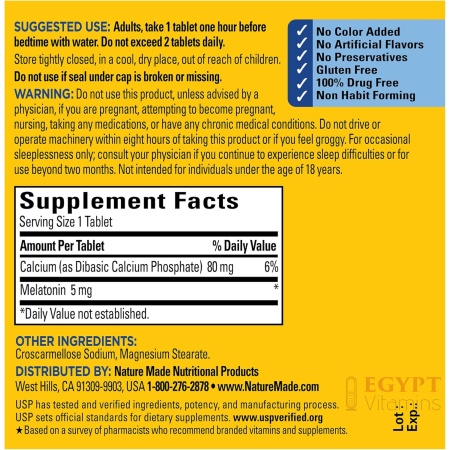Product Description


Did you know most melatonin sources are synthetic or come from animals?
Herbatonin is the first phyto-melatonin (plant melatonin) product in the world, consisting of unique varieties of rice, alfalfa and chlorella. The melatonin in Herbatonin is bio-identical to human melatonin and is not extracted, rather the melatonin is within the cell of the plant itself. Our proprietary farming and manufacturing method only ever uses mother-nature, water, temperature and pressure. Combine that with our vegan capsule and never using chemicals, solvents, preservatives, excipients, fillers or flavors and Herbatonin is just like eating the plant itself, just in a very concentrated form. In addition, Herbatonin is allergen free with no gluten, dairy, soy, wheat, corn or sucrose.

Jet Lag, Shift Work and Sleep* and Antioxidant
Jet Lag, Shift Work and Sleep
Jet Lag directions: Upon arriving in new time zone stay awake all day. Mirror new time zone sleep cycle and half an hour before desired sleep take 1-2 capsules (3mg to 6mg of melatonin). Continue for the following 3-4 nights gradually reducing the dose. Sleep in darkness and ensure morning sun wakes you up.*
Melatonin is known to work with your circadian rhythm (body’s internal clock) to let you know when it’s time to sleep, wake and eat. The fact it helps you wake is often overlooked. Just as the retina triggers the sleep cycle when it registers darkness, it also triggers the wake cycle when it registers light in the morning. Even through your eyelid!
It is important to be aware that the body only produces approximately 0.3mg of melatonin per day, so 3mg might be too much for your body. Too much melatonin can result in waking up groggy, or even make it harder to fall asleep or stay asleep. Which is why it is so important to ensure you take the proper, recommended dose.*
Antioxidant
Preclinical research from the Medical University of Lublin in Europe by Kukula-Koch, W. and Meissner, H. (2020) appears to show that plant-based melatonin (Herbatonin) possess significantly stronger antioxidant potential and free radical scavenging capacity as compared to synthetic melatonin according to emerging evidence. In our head-to-head research we saw higher ORAC (Oxygen Radical Absorbance Capacity) values in phyto-melatonin as compared to synthetic melatonin, as well as DPPH (organic compounds comprised of stable free radical molecules used to analyze antioxidant capacity).
Herbatonin vs Synthetic Melatonin

Cell Health and Where Does Your Melatonin Come From?
Cell Health:
Preclinical research from the Medical University of Lublin in Europe by Kukula-Koch, W. and Meissner, H. (2020) appears to show natural melatonin from plants (Herbatonin) may have superior abilities to reduce COX-2 enzyme activity (and subsequent inflammation) as compared to synthetic melatonin.* Herbatonin may also have superior abilities in relation to reducing cellular and DNA damage as compared to synthetic melatonin. This was demonstrated in the study by reduced ROS (Intracellular Reactive Oxygen Species) levels. ROS are byproducts of cellular metabolism, and its overproduction is associated with cellular and DNA damage as well as the development of various human diseases, inflammation, and aging.
Where Does Your Melatonin Come From?
Melatonin was first isolated in 1958 from the pineal gland of a cow and through to the mid 1990’s all melatonin supplements were animal – extracted from the pineal glands of cows, sheep or pigs.
In the mid 1990’s there was a shift to bio-identical sources of hormones, including melatonin. Bio-identical melatonin is often chemically replicated from the original plant source material, to “copy” the compound in a lab, but then labs often use petrochemicals to produce the end synthetic product.
Nearly all melatonin supplements on the market today in the US (including bio-identical melatonin) are synthetic. However, most are marketed as “natural” because it is bio-identical to human melatonin or “vegan” because the origin source material they used to produce the compound might have been a plant even though the end product is made from petrochemicals.
Herbatonin is the exception, and the first phytomelatonin in the world, made from specific varieties of rice, chlorella, and alfalfa.
Ingredients:
3mg Melatonin (Herbatonin – 100:1 Alfalfa, Chlorella and Rice), Capsule – Hypromellose (Plant derived cellulose)

















المراجعات
لا توجد مراجعات بعد.